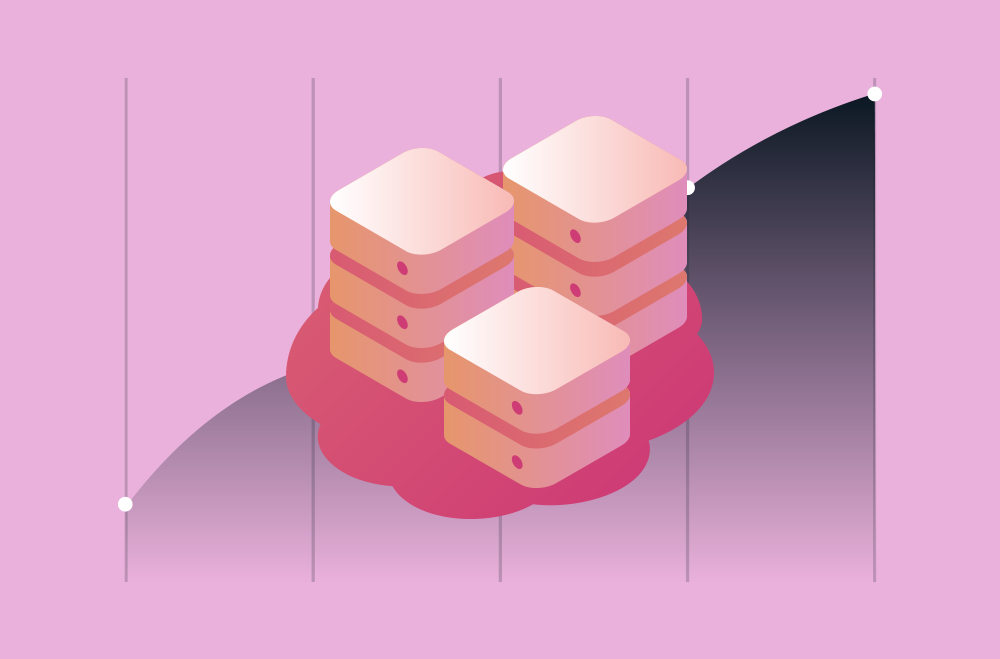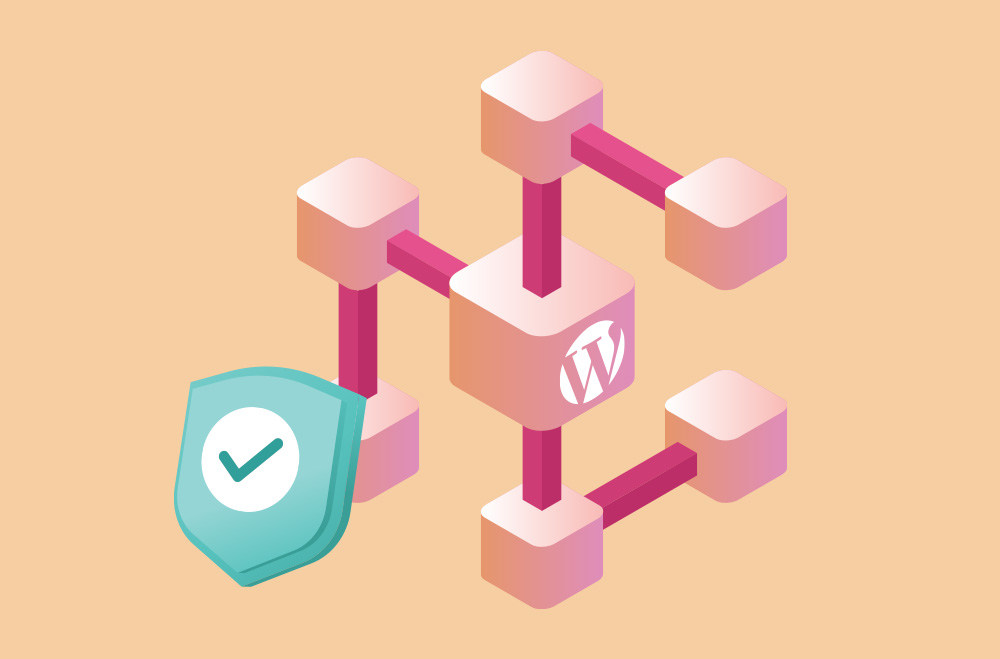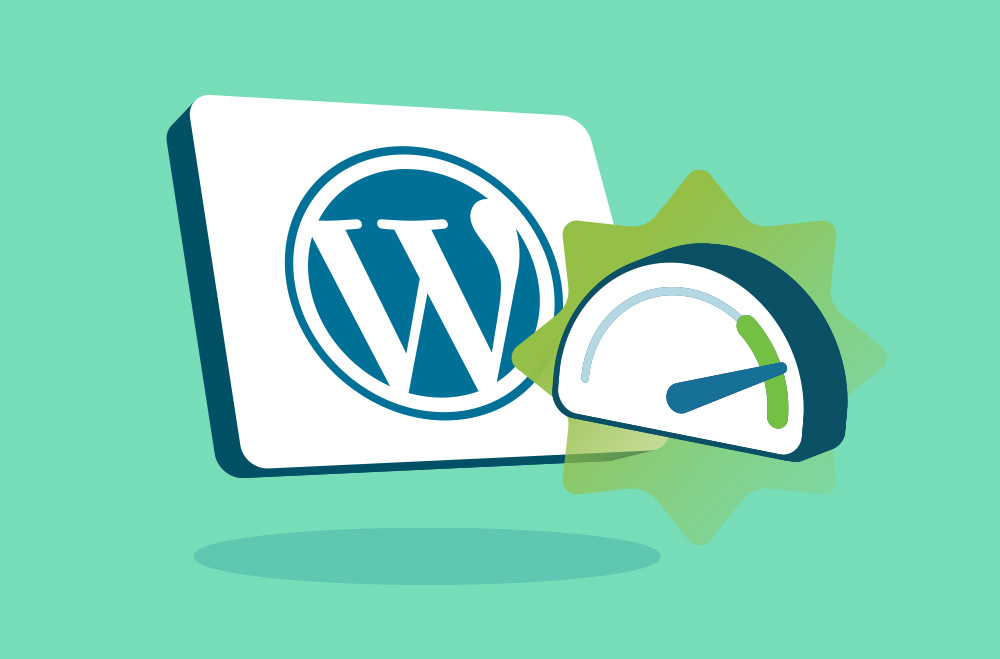
La velocità del sito WordPress è importante per i proprietari di siti Web che desiderano attirare più visitatori, migliorare il posizionamento nei motori di ricerca e aumentare le conversioni. Un sito Web a caricamento lento può frustrare gli utenti, aumentare la frequenza di rimbalzo e avere un impatto negativo sulla visibilità online. Al contrario, un sito veloce e reattivo spesso crea una migliore esperienza utente, incoraggia visite prolungate e aiuta a stabilire un rapporto di fiducia con il tuo pubblico. La velocità è diventata sempre più importante nel competitivo panorama digitale e garantire che il tuo sito si carichi in modo efficiente è ora una considerazione fondamentale per la maggior parte dei proprietari di siti web.
La notizia incoraggiante è che non è necessario essere uno sviluppatore per aiuta a migliorare le prestazioni del tuo sito WordPress . Con la giusta combinazione di strategie e strumenti di facile utilizzo, anche i principianti possono spesso ottenere miglioramenti notevoli. Questa guida completa ti guiderà attraverso le tecniche passo passo per ottimizzare la velocità del sito. Dalla compressione delle immagini e dalla memorizzazione nella cache alla gestione dei plugin e alle scelte di hosting, imparerai approcci pratici per rendere il tuo sito WordPress più veloce, più efficiente e facile da usare.
Il grafico sopra illustra le tendenze coerenti di ottimizzazione della velocità del sito WordPress dal 2022 al 2025. I rapporti di settore suggeriscono che i punteggi medi delle prestazioni sono aumentati costantemente da 62 nel 2022 a 86 entro il 2025. Questa crescita riflette in genere l'adozione diffusa di tecniche di ottimizzazione come la compressione delle immagini, la memorizzazione nella cache, il caricamento lento e il miglioramento dell'infrastruttura di hosting. Con una maggiore consapevolezza, strumenti migliori e tecnologie di base aggiornate, i proprietari di siti Web spesso migliorano con successo l'esperienza dell'utente, riducono la frequenza di rimbalzo e migliorano la SEO, rendendo la velocità una priorità strategica nel panorama digitale in evoluzione.
La velocità del sito WordPress rappresenta più di una metrica tecnica; Influisce direttamente sul modo in cui gli utenti interagiscono con il tuo sito web. Nell'ambiente digitale frenetico di oggi, le persone si aspettano un accesso rapido alle informazioni. Se il tuo sito impiega più di qualche secondo per caricarsi, molti visitatori potrebbero abbandonarlo prima di vedere i tuoi contenuti. Ciò può creare un'esperienza utente scadente, ridurre il tempo sul sito e limitare la capacità di convertire i visitatori in clienti o abbonati. In poche parole, la velocità gioca un ruolo fondamentale nel mantenere l'attenzione e creare fiducia.
Oltre all'esperienza dell'utente, la velocità del sito può essere un fattore determinante per l'ottimizzazione dei motori di ricerca (SEO). Google e altri motori di ricerca considerano i tempi di caricamento quando classificano i siti web. Un sito lento può essere penalizzato nelle classifiche di ricerca, rendendo più difficile per i potenziali visitatori trovarti. I siti veloci, d'altra parte, sono spesso premiati con una migliore visibilità e un aumento del traffico organico. Che tu gestisca un blog personale o un negozio di e-commerce, un sito WordPress veloce in genere ti aiuta a soddisfare le aspettative degli utenti e i requisiti SEO.
Motivi principali per cui la velocità di WordPress è spesso importante:
Prima di iniziare a ottimizzare il tuo sito WordPress per ottenere prestazioni migliori, è utile capire a che punto sei attualmente. Gli strumenti di test della velocità possono aiutarti a misurare i tempi di caricamento, identificare i colli di bottiglia e ricevere consigli pratici. Questi strumenti forniscono informazioni dettagliate su ciò che potrebbe rallentare il tuo sito, che si tratti di immagini non ottimizzate, script che bloccano il rendering o ritardi del server. Eseguendo regolarmente test di velocità, puoi monitorare l'efficacia delle tue modifiche e rimanere consapevole dei nuovi problemi di prestazioni man mano che il tuo sito cresce.
I test di velocità simulano le condizioni del mondo reale e offrono suggerimenti su misura per la configurazione specifica del sito. Spesso si consiglia di eseguire test da più posizioni geografiche e dispositivi per ottenere una visione completa di come i diversi utenti visualizzano il tuo sito. Una volta identificati i componenti più lenti, è possibile dare priorità alle ottimizzazioni che possono offrire i maggiori miglioramenti in termini di prestazioni ed esperienza utente.
Strumenti popolari per testare la velocità di WordPress:
Perché i test di velocità possono essere preziosi:
Le immagini svolgono un ruolo importante nell'estetica del sito Web e nel coinvolgimento degli utenti, ma sono tra i fattori più comuni alla base dei siti WordPress lenti. Il caricamento dei file di immagine non compressi di grandi dimensioni richiede più tempo, mettendo a dura prova la larghezza di banda e ritardando il rendering delle pagine, soprattutto sulle reti mobili. L'ottimizzazione delle immagini comporta la riduzione delle dimensioni dei file delle immagini senza compromettere la qualità visiva, contribuendo a garantire che il sito si carichi rapidamente pur mantenendo un aspetto professionale.
L'ottimizzazione delle immagini può essere un passaggio di grande impatto che molti utenti di WordPress trovano vantaggioso. Strumenti e plug-in possono rendere questo processo automatizzato e semplice, sia che tu stia gestendo un negozio online, un blog o un portfolio. I formati moderni come WebP e la compressione delle immagini prima del caricamento possono migliorare notevolmente la velocità del sito. Le immagini ottimizzate possono ridurre il carico del server, migliorare le classifiche SEO e migliorare l'esperienza complessiva dell'utente su tutti i dispositivi.
Strumenti e plug-in popolari per l'ottimizzazione delle immagini:
Perché le immagini ottimizzate spesso sono importanti:
Il lazy loading è una tecnica che ritarda il caricamento di elementi non critici come immagini, video e iframe fino a quando un utente non scorre verso il basso fino a quando un utente non scorre verso il basso fino a quando un utente non scorre verso il basso fino a loro. Invece di forzare il browser a caricare tutte le risorse multimediali contemporaneamente, dà la priorità al contenuto visibile per primo. Questo può ridurre drasticamente il tempo di caricamento iniziale della pagina, rendendo il tuo sito WordPress molto più veloce e reattivo, soprattutto per gli utenti con connessioni più lente o dispositivi mobili.
Il caricamento lento può aiutare a migliorare le prestazioni dei siti web con molte immagini, come blog, negozi di e-commerce o portfolio fotografici. Aiuta a ridurre al minimo il carico del server, a risparmiare larghezza di banda e a migliorare la velocità percepita del sito, poiché i visitatori vedono subito i contenuti utilizzabili. L'implementazione del lazy loading è spesso semplice con le funzionalità integrate in WordPress 5.5+ o attraverso plugin leggeri che non richiedono alcuna conoscenza di codifica.
Strumenti e metodi consigliati per il caricamento lento:
Perché il lazy loading è spesso importante:
Nel tempo, il tuo database WordPress può raccogliere disordine come revisioni di post, commenti spam, elementi cestinati e metadati orfani. Queste voci non necessarie possono rallentare le query del database e ridurre la reattività del tuo sito. La pulizia e l'ottimizzazione regolari del database possono aiutare a garantire che il sito carichi i contenuti rapidamente e funzioni in modo efficiente, anche in caso di aumento del volume dei dati. Questo approccio è spesso vantaggioso per i siti ad alto traffico o con aggiornamenti frequenti.
La pulizia del database può spesso essere automatizzata con gli strumenti giusti. Plugin come WP-Optimize e Advanced Database Cleaner possono consentirti di eliminare i dati spazzatura, ridurre il sovraccarico e pianificare le pulizie senza toccare una sola riga di codice. Mantenere il database snello può migliorare i tempi di caricamento e ridurre il rischio di problemi di prestazioni causati da tabelle gonfie o residui di plug-in legacy.
Plugin consigliati per la pulizia del database:
Perché la pulizia del database di WordPress può essere importante:
La memorizzazione nella cache è importante per velocizzare i siti Web WordPress riducendo ripetutamente la necessità di generare pagine dinamiche da zero. Invece di eseguire query sul database ed eseguire script PHP per ogni visitatore, la memorizzazione nella cache memorizza una versione statica pre-renderizzata della pagina. Quando un utente accede al tuo sito, la versione memorizzata nella cache può caricarsi molto più rapidamente, riducendo potenzialmente il tempo di risposta del server e la velocità di caricamento della pagina. Questo approccio è spesso particolarmente utile durante i picchi di traffico o con piani di hosting con risorse limitate.
Sono disponibili diversi tipi di memorizzazione nella cache, tra cui la memorizzazione nella cache delle pagine, la memorizzazione nella cache del browser e la memorizzazione nella cache degli oggetti. L'implementazione della memorizzazione nella cache può migliorare la velocità, aiutare a risparmiare le risorse del server, ridurre potenzialmente i costi di hosting e migliorare la soddisfazione degli utenti. I plugin possono rendere relativamente facile l'integrazione dei meccanismi di memorizzazione nella cache nella maggior parte dei siti WordPress, con una configurazione minima richiesta. La memorizzazione nella cache offre spesso miglioramenti sostanziali delle prestazioni se combinata con altre tattiche di ottimizzazione della velocità.
Plugin di caching consigliati:
Vantaggi della memorizzazione nella cache per i siti WordPress:
Temi e plugin sono necessari per la creazione e la personalizzazione di un sito WordPress, ma possono anche influire sulla velocità e sulle prestazioni. I temi gonfi caricati con funzionalità non necessarie o una codifica scadente possono aumentare le dimensioni della pagina e rallentare i tempi di rendering. Allo stesso modo, l'utilizzo di troppi plugin o di quelli mal mantenuti può creare conflitti di codice, aggiungere affaticamento del server e ridurre le prestazioni. Ogni plugin attivo in genere aggiunge un sovraccarico di elaborazione, che può accumularsi rapidamente e influire sui tempi di caricamento.
Per mantenere un sito veloce, prendi in considerazione la scelta di temi leggeri creati per le prestazioni e l'attivazione solo dei plug-in necessari. Può anche essere utile rivedere regolarmente l'elenco dei plug-in e rimuovere o sostituire quelli obsoleti, inutilizzati o ridondanti. L'utilizzo di un numero inferiore di plugin di alta qualità spesso porta a un'esecuzione del codice più pulita, a caricamenti più rapidi delle pagine e a un ambiente WordPress più stabile.
Temi consigliati veloci ed efficienti:
Suggerimenti per la gestione di plugin e temi:
Vantaggi dell'ottimizzazione di temi e plugin:
L'aggiornamento del core, dei temi e dei plugin di WordPress rappresenta uno dei modi più semplici ma spesso efficaci per migliorare e mantenere la velocità del sito. Gli sviluppatori rilasciano spesso aggiornamenti per correggere bug, migliorare la compatibilità e migliorare le prestazioni. La mancata applicazione di questi aggiornamenti può causare l'esecuzione di codice obsoleto da parte del sito che potrebbe rallentare il rendering della pagina e entrare in conflitto con altri componenti. Ogni aggiornamento include spesso miglioramenti della velocità, in particolare man mano che WordPress si evolve per supportare le funzionalità dei browser moderni e gli standard di prestazioni.
Oltre alla velocità, gli aggiornamenti sono in genere importanti per la sicurezza e la stabilità a lungo termine. Temi e plugin obsoleti sono tra i punti di ingresso più comuni per gli attacchi informatici. L'applicazione degli aggiornamenti può aiutare a correggere le vulnerabilità e garantire che il tuo sito tragga vantaggio dalle più recenti tecniche di ottimizzazione. Strumenti di automazione come Easy Updates Manager possono aiutare a semplificare questo processo, rendendo più facile rimanere al passo con i miglioramenti senza sforzo manuale.
Strumenti e pratiche utili:
Vantaggi di mantenere tutto aggiornato:
La scelta del provider di hosting può influire sulla velocità di caricamento del sito WordPress. Anche con ottimizzazioni adeguate, un'infrastruttura di hosting scadente può diventare un collo di bottiglia. Gli ambienti di hosting condiviso spesso allocano risorse limitate tra più utenti, il che può causare rallentamenti durante i picchi di traffico. D'altra parte, l'hosting WordPress ad alte prestazioni o gestito offre in genere server più veloci, risorse dedicate, memorizzazione nella cache integrata e integrazione CDN, aiutando il tuo sito a caricarsi più velocemente, rimanere stabile e funzionare in modo affidabile.
Principali funzionalità di hosting che possono influire sulla velocità:
Sebbene le principali ottimizzazioni come la memorizzazione nella cache e la compressione delle immagini siano importanti, anche piccole modifiche possono migliorare la velocità. Queste regolazioni richiedono in genere poco tempo per essere implementate, ma collettivamente possono ridurre il carico del server, diminuire le dimensioni della pagina e velocizzare la distribuzione dei contenuti. Dalla limitazione del numero di revisioni dei post salvati alla riduzione degli script esterni non necessari, questi piccoli perfezionamenti possono aiutare a semplificare le prestazioni del sito. La maggior parte di questi non richiede alcuna conoscenza di codifica e spesso può essere gestita direttamente attraverso la dashboard o con plug-in leggeri.
Modifiche pratiche per migliorare potenzialmente la velocità di WordPress:
I font e gli script, in particolare quelli provenienti da fonti esterne come Google Fonts, pixel di tracciamento o reti pubblicitarie, possono aggiungere ulteriore peso alle pagine e ritardare il rendering delle pagine. L'ottimizzazione di queste risorse può aiutare a migliorare i tempi di caricamento e ridurre lo spostamento del layout. L'hosting dei font in locale, la limitazione del numero di varianti di font e la combinazione o il rinvio di JavaScript non critici possono portare a prestazioni notevolmente più veloci. Queste modifiche possono anche migliorare i punteggi Core Web Vitals, in particolare per gli utenti mobili, riducendo le risorse inutilizzate o che bloccano il rendering.
Suggerimenti per ottimizzare in modo efficace i tipi di carattere e gli script:
La velocità del sito non è in genere una soluzione una tantum. Spesso richiede un monitoraggio continuo e una manutenzione proattiva per garantire prestazioni ottimali man mano che i contenuti, il traffico e i plug-in si evolvono. I controlli regolari della velocità possono aiutarti a rilevare i rallentamenti prima che influiscano sui visitatori, mentre il monitoraggio del tempo di attività e del comportamento di carico fornisce informazioni dettagliate sulle tendenze delle prestazioni. Ogni volta che installi un plug-in, carichi nuovi media o aggiorni il tuo tema, può essere utile rivalutare la velocità del tuo sito per assicurarti che nulla influisca negativamente sull'esperienza dell'utente.
Pratiche consigliate per il monitoraggio della velocità a lungo termine:
Migliorare la velocità del tuo sito WordPress in genere comporta un monitoraggio costante, scelte ponderate e un'attenta ottimizzazione. Questo elenco di controllo riepiloga le azioni potenzialmente efficaci per garantire un buon rendimento del tuo sito web. Che tu abbia appena iniziato o stia esaminando le prestazioni del tuo sito, questi passaggi possono aiutarti a creare un'esperienza più rapida e reattiva che mantiene gli utenti coinvolti e supporta la tua visibilità nei risultati di ricerca.
Elenco di controllo per il miglioramento della velocità attuabile:
Sebbene molte ottimizzazioni della velocità di WordPress possano essere gestite con plugin e strumenti di base, ci sono situazioni in cui la consulenza di un professionista può essere vantaggiosa. Se il tuo sito continua a non funzionare bene dopo le ottimizzazioni di base o se gestisci un negozio online complesso, un sito di appartenenza o un blog ad alto traffico, possono essere utili tecniche avanzate come configurazioni a livello di server, controlli del codice personalizzato o ottimizzazione del database. Un professionista è spesso in grado di identificare i colli di bottiglia nascosti e implementare soluzioni che vanno oltre gli strumenti fai-da-te, contribuendo potenzialmente a migliorare le prestazioni e la stabilità.
Segni che potresti beneficiare dell'aiuto di esperti:
Potenziali vantaggi dell'assistenza professionale:
Mentre molti problemi di prestazioni di WordPress possono spesso essere risolti con plugin e strategie di ottimizzazione di base, arriva un punto in cui gli sforzi fai-da-te potrebbero non essere sufficienti, soprattutto per siti Web ad alto traffico, negozi di e-commerce o piattaforme di abbonamento. Se avete già implementato pratiche come il caching, l'ottimizzazione delle immagini, la pulizia del database e l'audit di temi/plugin, ma le prestazioni del vostro sito rimangono incoerenti, potrebbe valere la pena prendere in considerazione l'assistenza professionale. L'ottimizzazione avanzata della velocità del sito richiede spesso regolazioni personalizzate del codice, indicizzazione del database o modifiche a livello di server che vanno oltre la maggior parte delle soluzioni basate su plug-in.
I servizi professionali possono aiutarti a ottimizzare il tuo ambiente WordPress per migliorare le prestazioni e la scalabilità. Servizi come quelli offerti da hosting WordPress gestito I fornitori in genere gestiscono tutto, dall'ottimizzazione dei server e dagli audit della velocità alla memorizzazione nella cache a livello aziendale e al monitoraggio continuo delle prestazioni. Scegliendo fornitori esperti, puoi ottenere tempi di caricamento più rapidi, maggiore stabilità durante i picchi di traffico e la tranquillità di sapere che il tuo sito è in mani capaci, permettendoti di concentrarti sui contenuti, sullo sviluppo del business e sulla crescita.





